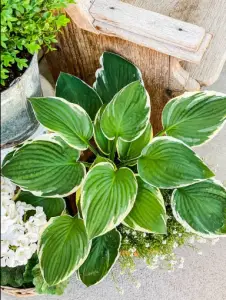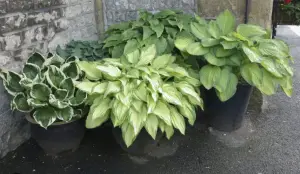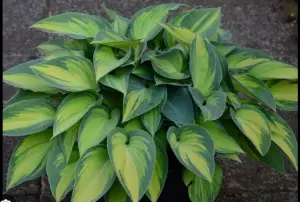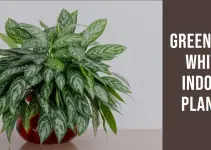Nacome Solar Cat Outdoor Statues for Garden: Outside Decor with Butterfly Clearance for Yard Art Lawn Ornaments Porch Patio Balcony Home House - Birthday Gifts for Grandma Mom Women
$31.98 (as of July 9, 2025 21:54 GMT +00:00 - More infoProduct prices and availability are accurate as of the date/time indicated and are subject to change. Any price and availability information displayed on [relevant Amazon Site(s), as applicable] at the time of purchase will apply to the purchase of this product.)Zevo 2 Flying Insect Traps & 4 Cartridges - Plug In Fly Trap & Indoor Bug Catcher for Gnats, House & Fruit Flies - Mess-Free - Use in Any Room - Uses Blue & UV Light (2 Plug In Devices & 4 Cartridges)
$45.97 ($7.66 / Count) (as of July 9, 2025 21:54 GMT +00:00 - More infoProduct prices and availability are accurate as of the date/time indicated and are subject to change. Any price and availability information displayed on [relevant Amazon Site(s), as applicable] at the time of purchase will apply to the purchase of this product.)The Effortless Elegance of Indoor Hosta Plants: A Comprehensive Growth and Care Guide
Lush, vibrant foliage that adds a touch of natural beauty to any indoor space – that’s the allure of the beloved hosta plant. Often celebrated as the perfect outdoor garden companion, hostas have recently made their way into the world of indoor gardening, captivating plant enthusiasts with their low-maintenance charm and stunning leaf patterns. If you’re ready to embrace the seamless elegance of these resilient perennials, this comprehensive guide will equip you with all the knowledge you need to cultivate thriving indoor hosta plants.
Understanding the Hosta: A Versatile Indoor Plant

Before we dive into the nitty-gritty of indoor hosta care, let’s take a moment to appreciate the unique qualities that make these plants such a delightful addition to any indoor space.
Hostas are hardy perennials that belong to the Asparagaceae family, boasting an impressive array of leaf shapes, textures, and colors. From the delicate, lance-shaped leaves of the Lancifolia variety to the heart-shaped foliage of the Cordata cultivars, each hosta plant offers a distinct visual appeal. And let’s not forget the captivating hues – from deep blues and greens to vibrant golds and variegated patterns, there’s a hosta to complement any interior design scheme.
But the allure of hostas extends beyond their aesthetic appeal. These resilient plants are surprisingly low-maintenance, making them an excellent choice for both novice and experienced indoor gardeners. Their ability to thrive in low-light conditions and their tolerance for occasional neglect makes them a forgiving companion for even the busiest of plant parents.
Setting the Stage: Creating the Perfect Indoor Hosta Environment
To unlock the full potential of your indoor hosta plants, it’s essential to create an environment that mimics their natural habitat as closely as possible. Here are the key factors to consider:
- Light Requirements Hostas are renowned for their ability to flourish in shady outdoor spaces, but when it comes to indoor cultivation, they require a bit more light. Aim for a location that receives bright, indirect sunlight for at least four to six hours per day. East or north-facing windows are ideal, as they provide gentle, filtered light without the risk of scorching the delicate leaves.
If your indoor space lacks sufficient natural light, you can supplement it with grow lights or LED lamps specifically designed for indoor plants. Just be sure to position the lights at an appropriate distance and duration to prevent overexposure or leaf burn.
- Temperature and Humidity Like many houseplants, hostas thrive in a comfortable, temperate environment. Aim to maintain a temperature range between 65°F and 75°F (18°C to 24°C) for optimal growth. Avoid placing your hosta near drafty windows, heating vents, or air conditioning units, as sudden temperature fluctuations can stress the plant.
As for humidity, hostas appreciate slightly elevated levels, ranging from 40% to 60%. If your indoor air tends to be dry, consider using a humidifier or placing a shallow tray filled with pebbles and water near your plant. The evaporating water will help increase the ambient moisture levels.
- Soil and Containers Hostas have a preference for well-draining, nutrient-rich soil. A high-quality potting mix specifically formulated for indoor plants is an excellent choice, as it provides the necessary drainage and aeration for healthy root growth. You can also create your soil blend by combining equal parts of peat moss, compost, and perlite or vermiculite.
When it comes to containers, hostas appreciate a spacious home with ample room for their roots to spread. Choose a pot with drainage holes to prevent waterlogging, and aim for a size that’s at least 2 to 4 inches wider than the current rootball of your plant. Terra cotta, ceramic, or plastic pots all work well, but remember that terra cotta tends to dry out faster, requiring more frequent watering.
Nurturing Your Indoor Hosta: Tips for Exceptional Care

With the ideal environment, it’s time to focus on the daily care routine that will keep your indoor hosta plants thriving. Here are some essential tips to ensure their continued growth and vitality:
- Watering Techniques Proper watering is crucial for the health of your hosta plants. These moisture-loving perennials prefer consistently moist, but not waterlogged, soil. During the growing season (spring and summer), water your hostas when the top inch of soil feels dry. In the dormant winter months, you can reduce watering frequency slightly, as the plants require less moisture.
When watering, aim to thoroughly soak the soil, allowing excess water to drain out the bottom of the pot. Avoid letting your hosta sit in standing water, as this can lead to root rot. If you notice yellowing or wilting leaves, it’s likely a sign of overwatering or underwatering – adjust your watering schedule accordingly.
- Fertilization for Lush Growth To support the lush, verdant growth of your indoor hosta plants, regular fertilization is recommended. Look for a balanced, water-soluble fertilizer formulated for indoor plants, and follow the manufacturer’s instructions for application rates and frequencies.
As a general guideline, you can fertilize your hostas every two to four weeks during the growing season, tapering off in the fall and winter months when growth slows down. Avoid over-fertilizing, as this can lead to salt buildup in the soil and potential root burn.
- Grooming and Maintenance Like any houseplant, your indoor hostas will benefit from occasional grooming and maintenance. Here are a few tips to keep them looking their best:
- Remove dead or damaged leaves: Regularly snip off any yellowing, brown, or damaged leaves using clean, sharp scissors or pruners. This not only improves the plant’s appearance but also prevents the spread of disease or pests.
- Divide overcrowded plants: As your hosta plants mature, they may become overcrowded in their pots, leading to compacted soil and nutrient deficiencies. Every two to three years, consider dividing the rootball and repotting into a larger container with fresh soil. This will reinvigorate growth and encourage a fuller, healthier plant.
- Wipe leaves clean: Dust and grime can accumulate on the broad leaves of your hosta, hindering their ability to photosynthesize effectively. Gently wipe the leaves with a damp cloth or use a soft-bristle brush to remove any debris.
- Pest and Disease Prevention While indoor hosta plants are generally quite resilient, they can still fall victim to common houseplant pests and diseases. Keep an eye out for issues such as spider mites, aphids, and fungal diseases like leaf spot or crown rot.
Maintaining proper cultural conditions, such as adequate humidity and air circulation, can help prevent many of these problems from occurring. If you do notice any signs of pests or disease, act quickly by isolating the affected plant and treating it with an appropriate insecticidal soap or fungicide.
Embracing the Seasonality: Hosta Growth Cycles
One of the unique aspects of growing hostas indoors is the ability to observe their natural growth cycles up close. Unlike many other houseplants, hostas go through a distinct period of dormancy during the winter months, mimicking their outdoor counterparts.
As autumn approaches and daylight hours decrease, your indoor hosta will begin to slow down its growth and prepare for its annual rest period. The leaves may yellow and die back, and the plant will enter a state of dormancy, conserving its energy for the following spring.
During this time, it’s essential to reduce watering and fertilization, allowing the plant to rest undisturbed. You can even move your dormant hosta to a cooler, darker location, such as a basement or garage, as long as the temperature remains above freezing.
Come springtime, as the days grow longer and warmer, your indoor hosta will awaken from its slumber, sending up new shoots and unfurling fresh, vibrant leaves. This is the perfect time to resume regular watering and fertilization, welcoming the return of your plant’s lush foliage.
Embracing the natural rhythms of your indoor hosta not only provides a fascinating glimpse into the plant’s life cycle but also ensures that you’re meeting its specific needs throughout the year.
Indoor Hosta Varieties: Spoilt for Choice

One of the many joys of growing hostas indoors is the vast array of cultivars and varieties available to choose from. Each offers a unique combination of leaf shapes, textures, and colors, the world of indoor hostas is a true playground for plant enthusiasts. Here are just a few captivating varieties to consider for your indoor garden:
- ‘Guacamole‘: With its bold, chartreuse-green leaves and heart-shaped form, the ‘Guacamole’ hosta is a showstopper. Its vibrant hue adds a pop of color to any indoor space, and its compact size makes it perfect for smaller containers.
- ‘Patriot‘: If you’re drawn to the drama of variegation, the ‘Patriot’ hosta is a must-have. Its deep green leaves are adorned with striking white margins, creating a captivating contrast that’s sure to turn heads.
- ‘Blue Mouse Ears‘: As its name suggests, this petite cultivar boasts adorable, rounded leaves in a stunning blue-green hue. The ‘Blue Mouse Ears’ is an ideal choice for those with limited indoor space, as it maintains a compact, tidy form.
- ‘Stained Glass‘: For a truly mesmerizing display, look no further than the ‘Stained Glass’ hosta. Its golden-yellow leaves are delicately streaked with shades of green, creating a stained-glass effect that’s sure to captivate.
- ‘Sun Power‘: If you’re looking for a host that can handle slightly brighter indoor conditions, the ‘Sun Power’ variety is a fantastic option. Its thick, corrugated leaves are a vibrant golden-yellow, adding a sunny touch to any room.
These are just a few examples of the countless indoor hosta varieties available. Whether you’re drawn to bold colors, intricate patterns, or unique textures, there’s a hosta out there that will perfectly complement your indoor oasis.
Embracing Indoor Hosta Gardening: A Rewarding Journey
Growing hosta plants indoors is more than just a hobby – it’s a rewarding journey that allows you to connect with nature while embracing the beauty and serenity of indoor gardening. As you nurture your hostas and watch them unfurl their lush foliage, you’ll find a sense of calm and tranquility wash over you.
However, the rewards of indoor hosta gardening extend beyond the aesthetic appeal. These resilient plants can improve indoor air quality by absorbing pollutants and releasing oxygen, creating a healthier and more inviting living environment. Moreover, the act of tending to your indoor garden can serve as a therapeutic outlet, reducing stress and promoting mindfulness.
So, why not leap and invite the effortless elegance of indoor hosta plants into your home? With this comprehensive guide in hand, you’re equipped with the knowledge and tips to cultivate a thriving indoor oasis that will bring you joy, tranquility, and a deeper connection to the natural world around you.




























